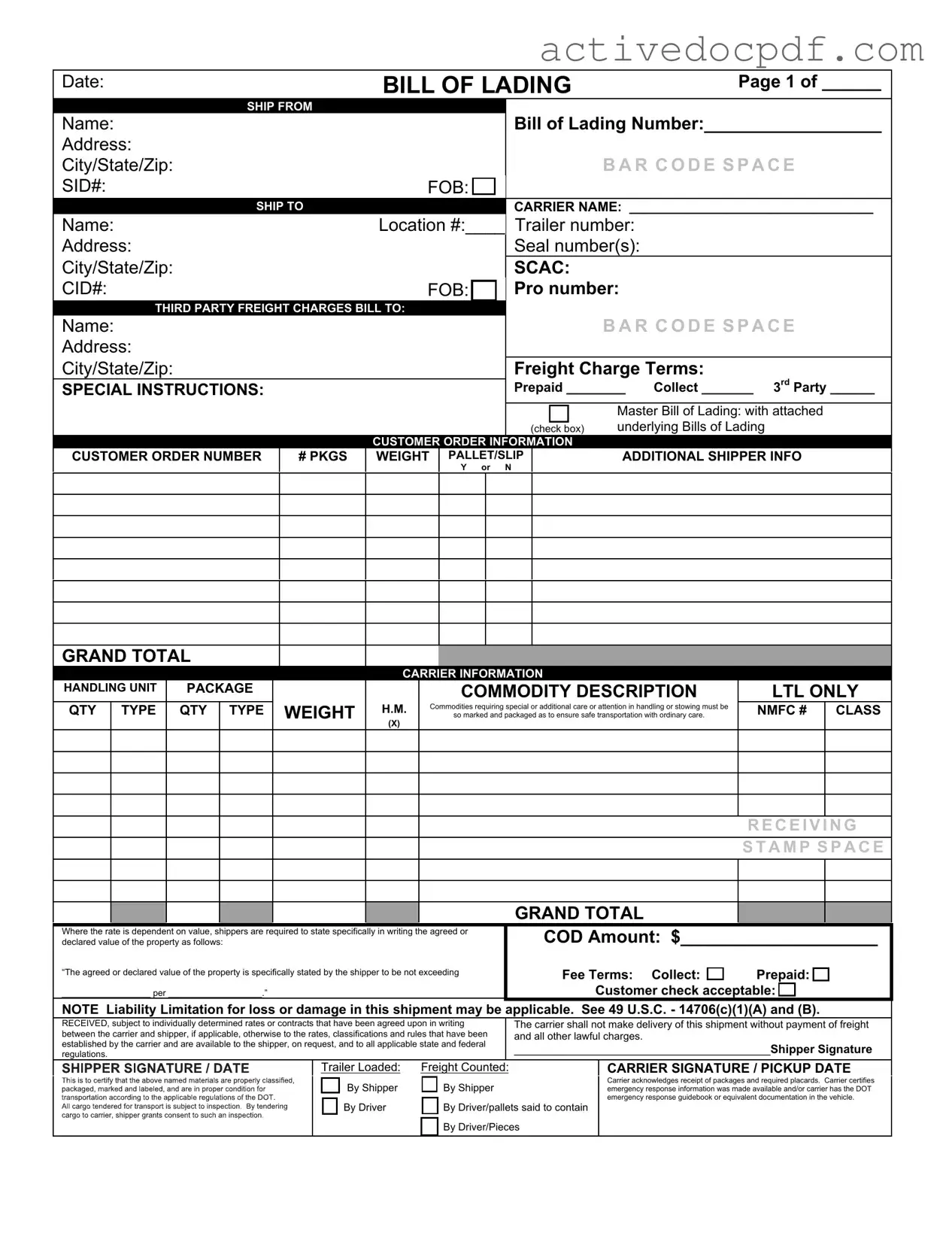What is a Bill of Lading?
A Bill of Lading is a legal document between a shipper and a carrier. It serves as a receipt for the goods being transported and outlines the terms of the transportation. This document is crucial for tracking shipments and ensuring that the goods are delivered as agreed.
The Supplement form is used to provide additional information that may not be included in the standard Bill of Lading. This can include details about special handling requirements, additional shipping instructions, or other pertinent information that the carrier needs to know to ensure proper delivery.
The shipper is typically responsible for filling out the Bill of Lading and the Supplement form. Accurate completion is vital to avoid delays and ensure that all parties understand the terms of the shipment.
Essential information includes:
-
Shipper's name and address
-
Consignee's name and address
-
Description of the goods
-
Weight and dimensions of the shipment
-
Transportation charges
-
Special instructions (if any)
All this information helps in the smooth processing of the shipment.
What happens if there is an error on the Bill of Lading?
Errors on the Bill of Lading can lead to significant issues, including delays or misdelivery of goods. If an error is discovered, it should be corrected immediately. Contact the carrier and provide the correct information to ensure that the shipment proceeds without complications.
Is the Bill of Lading legally binding?
Yes, the Bill of Lading is a legally binding document. It outlines the responsibilities and rights of both the shipper and the carrier. Failure to adhere to the terms can result in legal consequences, so it is essential to understand the obligations outlined in the document.
How can I track my shipment using the Bill of Lading?
You can track your shipment by using the tracking number provided on the Bill of Lading. Most carriers offer online tracking services where you can enter this number to get real-time updates on the status of your shipment.
